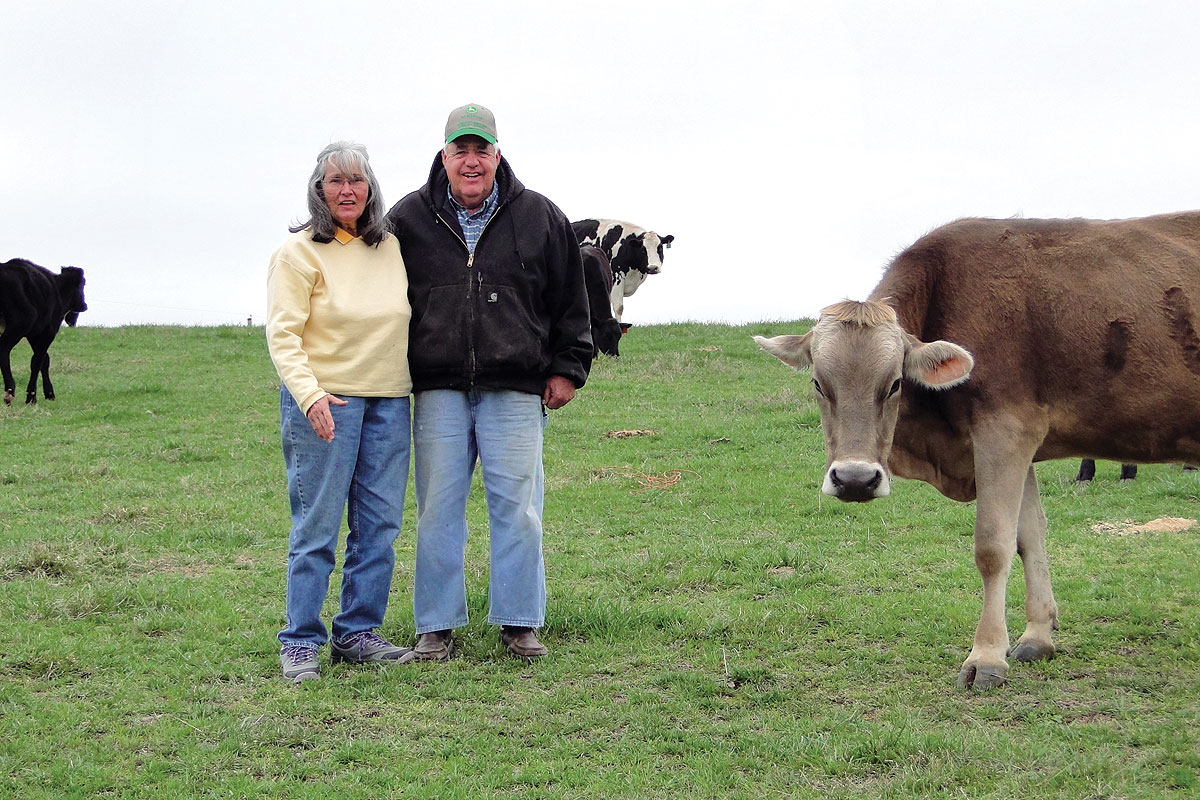
Three generations of the Hart family have been in the dairy industry in Prairie Grove, Ark.
John Robert and Carolyn Hart live on the site of John Robert’s family homestead in a house built before the Civil War. Though the original house was very small, it had a very strong foundation which still supports part of the constantly evolving home. When John Robert’s father Everett owned the homestead, the house had been rebuilt to accommodate the many people who came to visit grandma. Part of the renovation included a long but narrow dining room which could seat 12, the same configuration as today. Also at that time, beds were scattered all over the house to accommodate overnight visitors.
When the house was remodeled, boards with the dates of 1861 and 1863 carved into the wood as well as the names of several soldiers were discovered.
The Hart family has been in the dairy business for three generations, though the first generation ran more of a cow/calf operation. John’s grandfather had Milking Shorthorns and sold only the cream, using the rest to feed other livestock. When Everett had the dairy, he first sold Holstein milk to Borden’s and later to a co-op that sold to a Fayetteville, Ark., company. Everett started with two flat barns and made a huge improvement when he went to a double two barn. He also had the first pipeline milker in the area supported by a 200-gallon milk tank.
When John Robert and Carolyn purchased the farm, they first used the double two barn, which meant milking took five hours in the morning and five hours at night. Then they built the new double-six herringbone barn, which has a 2,000 gallon tank. However, milking is still about three hours every morning and evening.
“We start every milking session to make sure everything is working properly, but now have someone who milks at night,” Carolyn explained.
When John Robert and Carolyn purchased the farm, they started with 60 Holsteins, but had 90 cows within four years. The Harts run a dairy on 250 owned and 250 leased acres, with 300 head of mostly Holstein cows. They have eight Brown Swiss cows as well, which add slightly more butterfat, but serve the more important purpose of serving as teachers for the heifers.
“One time we had a new Holstein heifer who didn’t come up to the barn like she was supposed to and she didn’t want to,” John Robert recalled with a laugh. “One of my Brown Swiss cows went back toward her. The heifer saw her and calmly followed her to the barn and saved me a lot of trouble.”
Twenty years ago, polled Holstein bulls were introduced and are used to breed horns from the Hart herd. Because, according to John Robert, polled is a dominant characteristic, few calves today are born with horns.
John Robert believes that improved genetics combined with much better feeding programs have contributed to the fact that peak cows now produce an average of five gallons a day, with some producing as much as eight or nine, as opposed to the significantly less gallon average two years ago.
“I really enjoy bottle feeding the calves for six to eight weeks,” Carolyn, who was raised on a farm south of Cane Hill, said. “We keep most heifers as replacements and sell the remaining heifers and all the steers at 500 pounds.”
The Hart pastures are mostly Bermuda because Bermuda promotes more milk production than fescue. Weeds, such as buttercups, Hemlock and onions, can change the flavor of milk and are a constant issue due to wind and feed. Therefore, spring spraying is supported by spot spraying for weeds. Pastures are mostly fertilized by the cows and harrowed as needed.
Their 30-acre alfalfa hay field, however, is fertilized with potash because the use of chicken litter years ago makes additional fertilizing unnecessary. The alfalfa field produces 400 big square bales a year, which is fed to the cows fall and winter when milk production starts decreasing. The alfalfa is better for animal health helping to prevent milk fever, which sucks calcium from the cows when they give birth while adding calcium to them when they are dry.
The couple have two children – son Wesley, who works for Tyson, and daughter Julie, who is a home health nurse – and six grandchildren. That means the old farmstead is still crowded for family dinners and shared memories and stories.
One of John Roberts favorite stories happened when he was 6. He went with his father on a horse-drawn planter to sow a cornfield and got tired. Everett set him aside for a nap, and John Robert slept the entire time. When finished planting, Everett gathered the sleepy boy and took him back to the house. Another story is about one of the many times the Illinois River flooded their bottomland. This time, as occasionally can happen, small group of cows got stranded on the other side. Young John Robert saw Everett get on a draft horse and cross while fighting the raging current. All John Robert could see were the heads of his father and the horse. Everett gathered the cows and went back into the raging river with the cows, which pulled them a quarter of a mile downriver. Only heads visible again and the cows were exhausted by the time they walked back to the farm after fighting the river.
“One important thing I learned from that frightening experience is that if any of my cows get stranded just let them stay there until the river comes down,” John Robert said.






